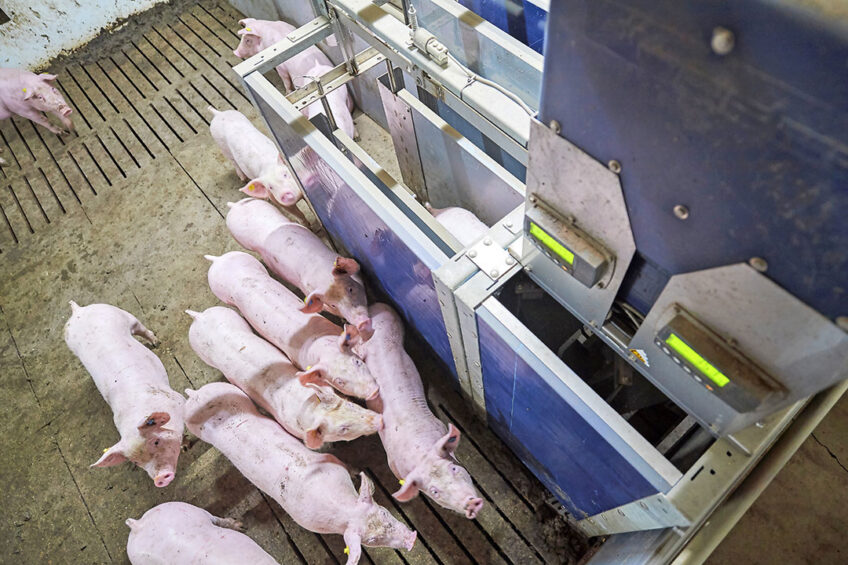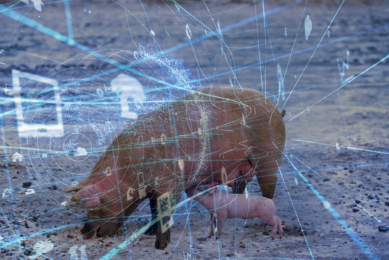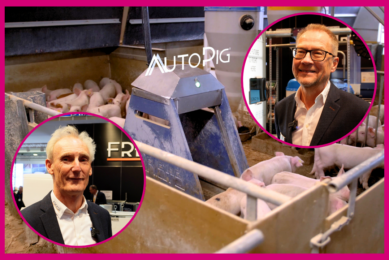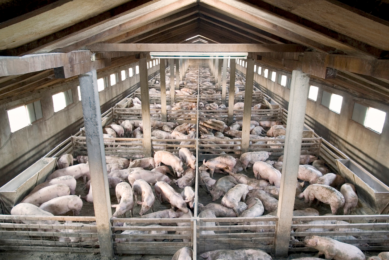Smart farming ideas for the swine industry

As the global population increases, meat consumption may increase with 73% by 2050. Therefore, pig producers will likely aim to maximise the output per animal unit and to increase animal density. Smart farming emerged from the need to inform farmers frequently and in more detail about health, welfare and productivity. What is already available and what can be expected?
Smart farming is the application of advanced techniques in livestock farming to monitor, model and manage animal production. Its aim is to increase the farmer’s ability to keep contact with individual animals as livestock production intensifies. Using smart farming techniques, farmers can better monitor the needs of individual animals and adjust their management practices accordingly, thereby preventing health, welfare and management issues and enhancing herd health. A wide range of smart farming technologies is available that could be used in the swine industry, particularly sensing and monitoring technologies such as accelerometers, pressure mats and force plates, microphones, cameras and radio frequency identification (RFID).
Sensing and monitoring technologies
Accelerometers are electronic sensors that allow continuous recording and characterise changes in activity data by measuring motion parameters. They are relatively inexpensive and can be fixed to different body areas such as the legs, neck and ears. Some challenges may be encountered to keep them mounted on an animal due to husbandry conditions and the pigs’ exploratory behaviour. Accelerometers can be used to detect early lameness by identifying changes in posture and stepping behaviour in sows.
Pressure mats analyse sow gait patterns to provide reliable lameness indicators such as lower walking speed, shorter stride length and longer stance time.
Force plates measure weight distribution of legs and can be used to assess lameness by identifying differences in weight bearing between legs, as lame animals are reluctant to bear weight on affected limbs. These kinds of measures are objective and highly replicable.
Microphones
Microphones can be used for objective, non-invasive measurement for stress recognition and disease surveillance in various farming environments. Microphones have been used to detect stress vocalisations (e.g. screams) and to identify pig-wasting diseases using sound data in audio surveillance systems. They have also been used to describe acoustic features of cough sounds caused by lung infection to develop a real-time cough classification algorithm based on sound feature analysis of respiratory disease and to objectively measure any deviation from normal respiratory pattern.
Cameras can be used as integrated parts of image-analysis procedure in interactive software packages to decide the need for heating or cooling a pig barn
Digital video-based tracking systems
Digital video-based tracking systems are inexpensive, reliable and accurate in monitoring performance, health and welfare indicators in pigs. For example, cameras can be used to accurately estimate body weight by measuring dimensions such as heart girth, length and height, and to measure thermal comfort based on pigs’ resting behavioural patterns such as spatial distribution of pigs within a pen by assessing huddling behaviour. Cameras have also contributed to assessment of thermal comfort by extracting ear base temperature automatically from top view thermal images in pigs, and they allowed the tympanic region to be identified as the best area for temperature monitoring when using an infrared thermometer and the ear and loin region when using temperature sensors.
Moreover, cameras can be used as integrated parts of image-analysis procedure in interactive software packages to decide the need for heating or cooling a pig barn. Lame and sound pigs can also be distinguished by video recording and tracking the elevation of the neck region during walking and changes in the ratio of step to stride length. This method can accurately identify up to 74% of the pigs subsequently developing lameness.
Three-dimensional machine vision systems
Three-dimensional machine vision systems can be used to automatically detect tail posture and provide early warning of tail biting on farm. Digital images can also help to precisely identify biter and bitten pigs during ear-biting outbreaks. Another on-farm application of cameras is to detect aggressive behaviour by measuring the speed and the distance between pigs to classify knocking and chasing behaviour.
The RFID systems are already routinely being used in pig farms to individually identify and track pigs. Other applications of RFID systems include recording individual pigs’ feeding patterns and drinking behaviour in a group housing context, and they could support long-time continuous health and behaviour monitoring of pigs in the near future.
Emerging technologies in the swine industry
Emerging technologies available for use in the swine industry include augmented reality, artificial intelligence, three-dimensional (3D) printing and the Internet of Things (IoT). The applications for emerging technologies in the swine industry are summarised in Table 1.
The term “augmented reality” is associated with technologies characterised by the following features:
- They combine physical and virtual objects over the real environment.
- They interact in real time.
- They align physical and virtual objects with each other.
Augmented reality allows the overlaying of different virtual elements generated by a computer over the real world, giving information about the physical elements that human senses could not provide.
Human intelligence simulation in machines
Artificial intelligence is described as human intelligence simulation in machines that exhibit traits associated with the human mind such as learning and problem solving. It aims to understand and design systems displaying intelligence properties such as the ability to learn, to derive knowledge from data, to rationalise and to take actions to achieve specific goals. Big data combined with artificial intelligence algorithms can be transformed into useful information to improve decision-making on pig farms.
3D printing
Another emerging technology is 3D printing. It is defined as the process of making a physical object from a 3D digital model by laying down thin material layers in succession. It is able to create replications, particularly of small parts, to save time and resources and to reduce costs by enabling distributed manufacturing of substitutes for both specialty equipment and conventional mass-manufactured products.
Internet of Things
Finally, the IoT is a new paradigm in the ability of connected devices through high-speed internet to sense, gather and share data so that it can be processed and used to fulfil common goals.
In conclusion, smart farming increases the farmer’s ability to keep contact with individual animals as livestock production intensifies. Using smart farming, a large amount of data can be collected in short periods of time, which can improve swine health and welfare management and monitoring.
Co authors: J.A. Calderón Díaz, J. Lee, S. Bueso Quan and H. Taheri. Azarpajouh was attached to Iowa State University, USA; author Calderón Díaz is attached to Teagasc, Ireland; the others are attached to Georgia Southern University, USA.











